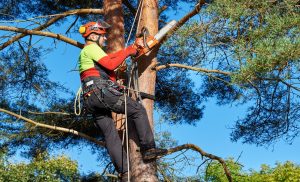Gardening is a rewarding hobby. It can reduce stress, provide fresh food, and enhance the beauty of your home. But growing your plants can be challenging. The growth rate may differ depending on the plant species.
For example, growing a Rose plant takes 45–50 days, while Aloe Vera takes 3–4 years to mature fully. So, here we will discuss universal factors that can help the quicker and stronger growth of any indoor or outdoor plant. With the help of these factors, you can boost your plant growth naturally.
Provide sunlight
Plants usually require full, partial, or no sunlight. This simple distinction has a significant effect on plant growth. Examine your yard before purchasing plants. When you are choosing which plants to buy, take note of the amount of sun that each section of the yard receives.
Moreover, arrange your garden to have shaded and exposed areas to accommodate different plant types. Most house plants grow in partial shade, which works well since indoor spaces rarely receive full sun.
When deciding on a location for a potted plant, consider the potential exposure it may receive to direct sunlight. Tree Clearance can help promote plant health if you notice your plant becoming thin and having difficulty reaching the light.
Provide Water
Like sunlight, water is essential to prepare food through photosynthesis. Deep down in the soil, water travels through the root system to carry nutrients. It carries nutrients from roots to the top, similar to how blood moves nutrients throughout the human body. However, gardeners often water their plants excessively or too little, damaging them and interrupting the nutrition flow.
Water needs depend on the kind and the environmental conditions a plant experiences. A quick moisture test in the soil can reveal a lot about the current water requirements. You can determine how much water is needed by putting your finger into the soil. If it feels wet but not too sticky, there is adequate moisture.
If the soil seems dry or lacks moisture, it is time to provide nutrients, as it is thirsty. However, proper drainage holes in indoor and outdoor pots are crucial to prevent root rotting and damp feet from water stagnation.
Mulch Properly
Mulch is a 2—to 3-inch-thick layer of composted organic matter that benefits most plants. It helps keep weeds away from plant-growing areas and decreases soil moisture evaporation.
With time, the mulch decomposes and releases nutrients that plants may consume. You must regularly replenish mulch on landscape beds but avoid placing excessive mulch on plant root systems. Too much mulch can smother the roots and stop rainwater from penetrating the ground.
Ensure your landscape plants’ trunks and stems are not in contact with the mulch. If you pile organic mulch against the trunks of trees, rats that girdle trees by gnawing on the bark can find refuge.
Harmful insects can find shelter in a mulch pile. A moist mulch pile against the trunk can attract organisms that break down decaying organic matter and cause the tree’s bark to deteriorate. Keep mulch away from tree trunks to avoid these issues.
Prune Properly
Pruning is crucial for maintaining tree and shrub health, constructing robust structures, and enhancing the aesthetic appeal of trees in urban and suburban environments. Properly pruned trees give shadow and attractiveness to the surrounding buildings and sunlight to companion plants around them.
Large trees with dead branches at the top of the crown serve as crucial nesting locations for native woodpeckers, bluebirds, and shutter stock owls. So, an arborist is critical for pruning large trees to ensure only branches that may fall, injure people, or damage property are removed.
Selective pruning of living and dead branches in small trees improves shape, air, and light flow and reduces disease and weather impacts. If selective pruning does not improve plant health, tree cutting is the best option.



